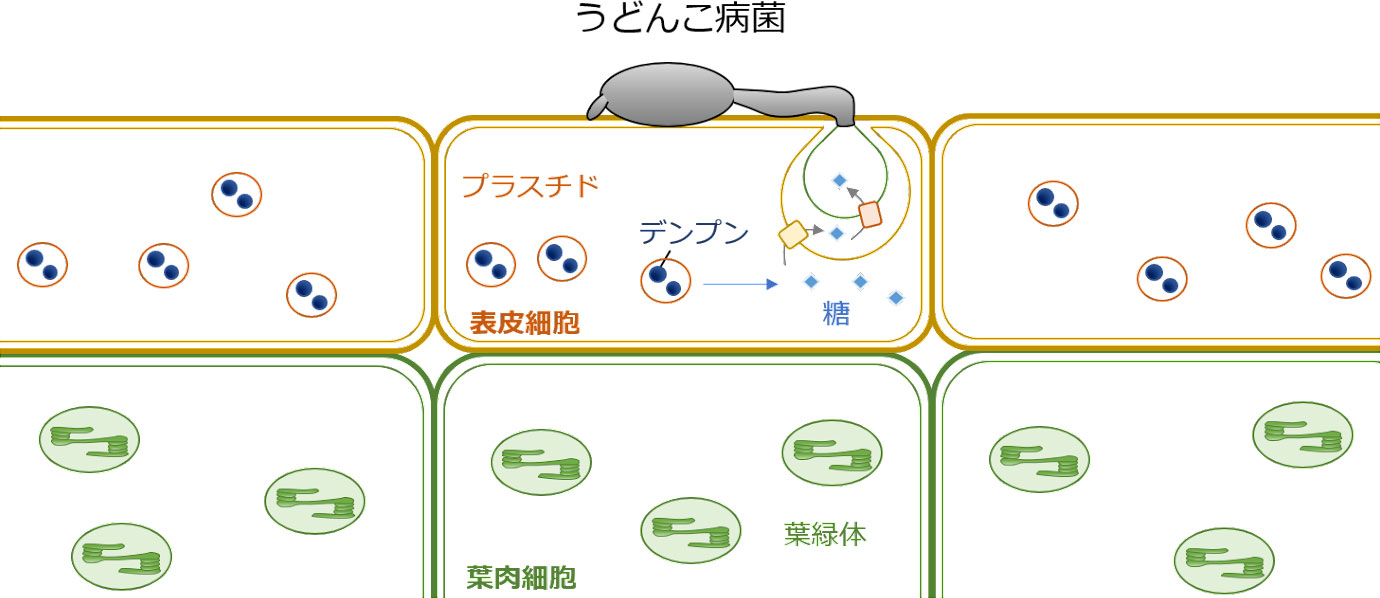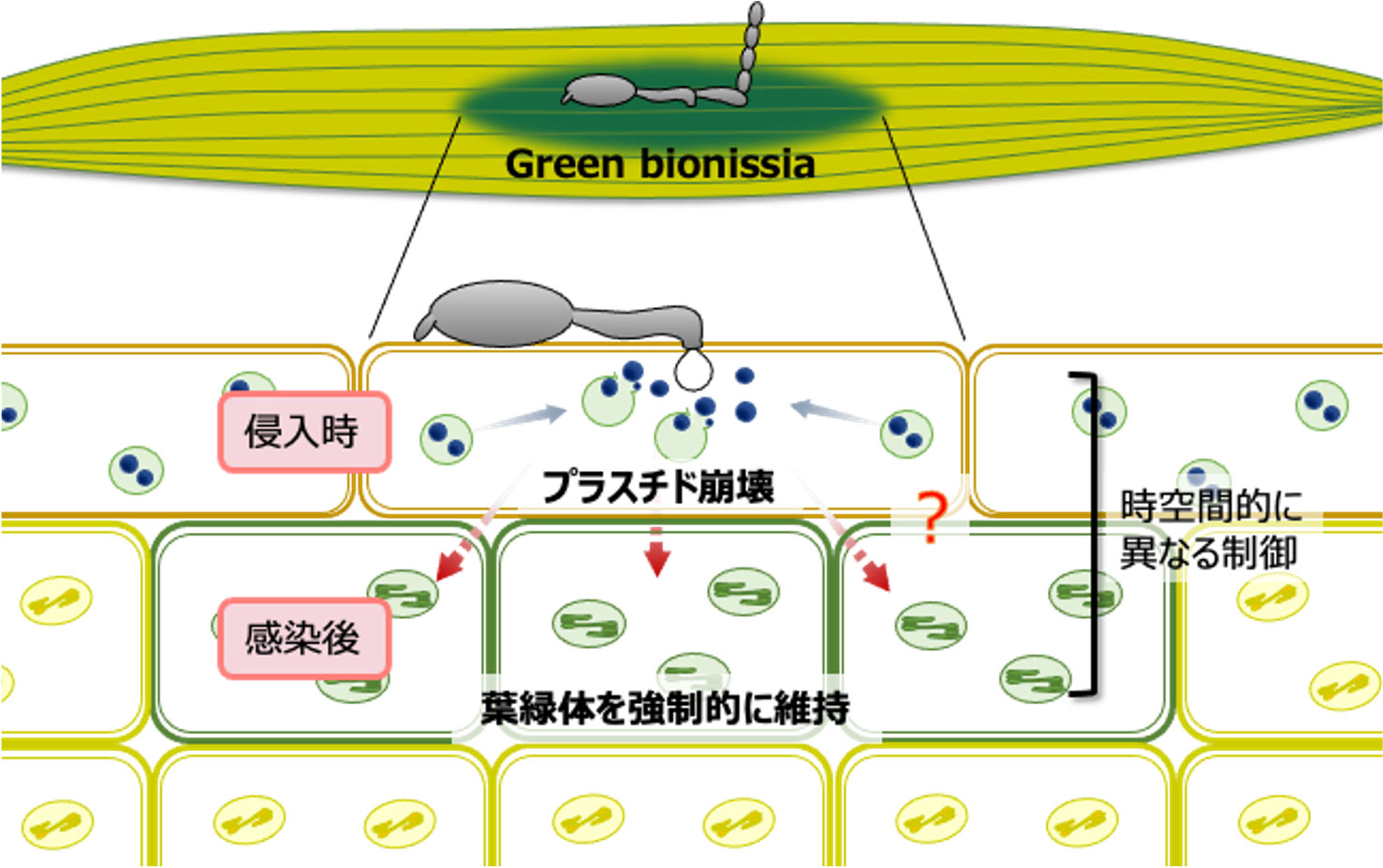
図1
図1.オオムギうどんこ病菌の感染戦略
生きた宿主植物にしか感染しない絶対寄生菌であるオオムギうどんこ病菌は、葉緑体との接触を避けるかのように表皮細胞にのみ侵入します。宿主からの反撃を巧妙に抑えつつ、吸器と呼ばれる構造を形成して栄養を吸い取っていると考えられています。
Figure 1. Infection strategy of barley powdery mildew fungus
The barley powdery mildew fungus, an obligate biotroph that infects only living host plants, invades exclusively epidermal cells, seemingly avoiding contact with chloroplasts. It is believed to suppress host defense responses while forming specialized structures called haustoria to extract nutrients from the host.


